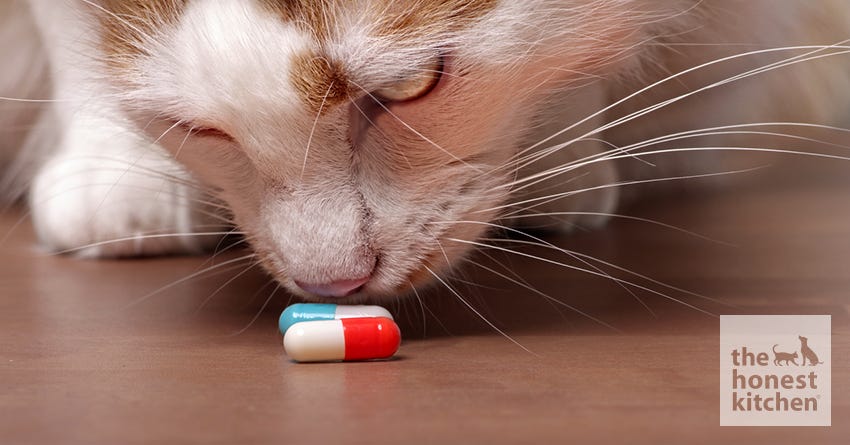What to do if your pet swallows poison
By Brad Lane of The Honest Kitchen
JUST BECAUSE YOU FEED YOUR PET HEALTHY FOOD, THAT DOESN’T MEAN YOUR PET WON’T EAT THINGS HE SHOULDN’T.
If your pet has potentially gotten into something toxic, don’t go searching around the internet, possibly being misled. Instead, there’s a very credible source you should contact: the Animal Poison Control Center. Operated by the American Society for the Prevention of Cruelty to Animals (ASPCA), the Animal Poison Control Center took over 200,000 phone calls from concerned pet owners in 2018, lending a voice to thousands of pets who may (or may not) have come into contact with a toxic element.
Comprised of expert toxicologists and professional veterinarians, the Animal Poison Control Center is staffed 24/7 to respond to emergency questions regarding potential poisons. A $65 consultation fee comes with every case the Animal Poison Control Center undertakes, including follow-up calls with your veterinarian, and they are happy to share plenty of information for pet owners before a situation arises. Collaborating with THK, the ASPCA helped create a quick procedure list to follow if you think your pet swallowed or came in contact with poison and answer a few questions about the life-saving Animal Poison Control Center (APCC).
Animal Poison Control Phone Number:
(888) 426-4435
WHAT TO DO IF YOUR PET SWALLOWS POISON:
If you believe your pet has swallowed or came in contact with a toxic substance, follow this procedural list to handle the situation quickly and in your pet’s best interest:
- Remove your pet from the area.
- Determine the toxic substance if able. (note packaging labels, ingredient listings, amount ingested/contacted)
- Call your veterinarian or the Animal Poison Control Center (even if your pet’s not showing symptoms—the sooner the better; be ready to provide your their breed, size, and medical history)
- Follow directions given by APCC or veterinarian (collect a sample of the toxin if directed)

Breaking these steps down further and answering a few frequently asked questions, the Medical Director of the ASPCA Animal Poison Control Center, Tina Wismer (DVM, MS, DABVT, DABT), has some further insight about treating potential pet poisonings.
The Honest Kitchen: What is one of the first things a pet owner should do if they suspect their pet has swallowed a poisonous substance?
Dr. Wismer: The first thing that you should do if you suspect your pet has ingested something poisonous is contact your veterinarian or the ASPCA Poison Control Center. When you call the APCC they will ask you about your pet’s medical background, size and weight, how much of the substance they ate, age, and the timeline of the ingestion. Keep your eyes on what your pets get into at all times and make sure to take action if they eat something they shouldn’t immediately. Do not wait for your pet to develop signs.
THK: What are some signs of a pet reacting to a poison and at what point should pet owners be calling the Animal Poison Control Center?
Dr. Wismer: The signs and symptoms of pet poisoning varies depending on what substance was ingested. Some common signs and symptoms include vomiting, diarrhea, tremors, and seizures. If you suspect that your pet has ingested something potentially poisonous you should call your veterinarian immediately. It is best to get a professional opinion sooner rather than later—your call could be lifesaving to your pet!
THK: What are the risks of using an internet search engine to determine if your pet has swallowed something poisonous?
Dr. Wismer: Although the internet can be a great tool to determine what is/isn’t okay to give your pet, you can also get too much information. Each poison case is different and pet owners may share frightening details of their situation which can cause panic in pet owners. It is best to contact an animal healthcare professional in the event that your pet is in danger by eating something they shouldn’t have.
Read on . . .
***

Born in raised in the great state of Iowa, Brad has lived on both sides of the country, from the Blue Ridge to the Cascades. Currently residing in Missoula, Montana, Brad is always on the lookout for the next big adventure.

